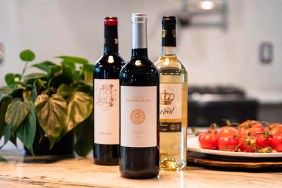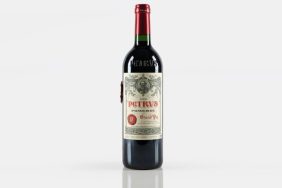World Malbec Day is April 17th. This might not mean anything to you, but fans of the Argentinean red wine most likely tipped back a few glasses in honor of this most special day. If you missed it, let us catch you up.
What is Malbec?
You might be more familiar with Shiraz, Merlot, Cabernet Sauvignon, Pinot Noir or Zinfandel. But, if you aren’t yet a fan of Malbec, you should be.
They are well-known for their rich tannins and historically are one of the grapes blended to make a red Bordeaux wine. For years, the grape was only used for blending even though it was obvious that it could easily stand on its own. On top of that, it was only made in the French Cahors region and the locals usually drank it all before it could make its way to any other country.
Born in France, Raised in Argentina
Although originally grown in the Bordeaux region of France, Malbec has become the most popular style of wine in Chile and Argentina. That’s because, in the mid-1800s, a handful of Argentinian winemakers were looking for a grape to plant that would be able to flourish in the country. They asked Frenchman Michael Pouget to help them decide which grape to select and he mentioned the Malbec. In the mid-1800s, the French Botanist brought the grape to Mendoza, Argentina, just before Phylloxera plagued Europe and destroyed an enormous amount of French Malbec vineyards. “Today, over 75% of the world’s acres of Malbec are grown in Argentina,” says Korinne Munson, Director of Communications for Terrazas de los Andes and Cheval des Andes.
The group visited France and returned to Argentina with pieces of grape vine. They planted them in Argentina. Before long, the hillsides were covered with grape vines and Malbec production had begun. Since then, the country has been more known for Malbec than France ever was.
The thin-skinned, late-ripening grape was well-suited for growing in Argentina’s hot, high elevation. “In the Andes, high-altitude vines are irrigated with melted snow while enjoying dry, warm days and cool nights. Mountains shelter fields from storms and humidity, allowing vines to thieve in peace,” says Munson.
Most, if not all, Malbecs you’ll see at your local wine store were made in Argentina. It’s okay if you’ve never tried a Malbec though. They have only begun to arrive in the US in the last ten years or so and they have been gaining in popularity amongst red wine enthusiasts in recent years.
Also: Rock and Roll and Wine? How Charles Smith is Making Wine Cool Again
As is the case for many wines, for the first century of their production in Argentina, Malbec was primarily only imbibed by Argentineans with very little product leaving the country. The rise in the price of better known red wines led to Americans and Europeans discovering Malbec. It became a replacement for more expensive, French wines and has remained a popular choice ever since.
On top of the prices, much of the popularity is due to it being a very approachable red wine that is easy to drink even for those not used to drier wines. “In Argentina, it is the most popular grape variety and is typically characterized by flavors of blackberry, plum, black cherry, milk chocolate, cocoa powder, violet, leather, and tobacco,” says Munson.
“When people think of Argentine wine, they think of Malbec.”
In the last decade, Argentinean Malbec has experienced exponential growth in the U.S. and has achieved similar popularity worldwide for its crowd-pleasing nature. “The delicious and affordable wine has revolutionized Argentina’s wine industry.”
Pairing Malbec
Munson suggests diving right into Malbec by opening a bottle up with dinner. “Malbec pairs well with a variety of interesting foods, including lean meats and funky flavors,” she says. “Serve with a bison burger topped with blue cheese and mushrooms or grilled pork ribs.” Celebrity Chef Aarón Sánchez created a recipe for Adobo rubbed pork ribs, especially for Terrazas de los Andes Reserva Malbec. While Malbec pairs nicely with a variety of foods, the fruit-forward wine can also be easily enjoyed on its own.
Why Try Malbec?
Munson believes that you should try Malbec as a delicious and affordable alternative to more expensive wines. It’s also an easy drinking wine known for its “juicy fruit flavors”. Wine novices would love it with or without food and you can guarantee that no matter what style of wine your party enjoys, you can be sure they’ll be happy with a Malbec.
Try These Malbecs:
Terrazas de los Andes
“The vineyards are in the foothills of the Andes, where each varietal is grown at the ideal altitude for optimal development,” says Munson. The high elevation vineyards are planted in dry, extreme conditions, but are able to thrive due to the snowmelt from the Andes Mountains. “The bright sun helps the grapes achieve optimal ripeness, creating lush red fruit flavors and aromas.”
2013 Terrazas de los Andes Reserva Malbec (SRP: $19.99)

Tasting notes: Intense purplish color with hints of red. Very expressive, revealing a floral and red fruit profile of violet, raspberry and cherry, with marked aromas of toasted coffee and chocolate. Characterized by a broad and sweet mouthfeel, delicate tannins add finesse to this great Malbec.
2011 Terrazas de los Andes Single Vineyard Malbec (SRP: $59.99)

A rich and intense Malbec created from a single vineyard of old-growth vines. The Las Compuertas vineyard dates back to 1929, and though the vines produce very little fruit, the grapes they do provide are beautifully full-flavored, mature and refined.
2012 Cheval des Andes (SRP: $99)

Cheval des Andes – “French finesse with Argentina’s fruit intensity”
“Cheval des Andes is a joint venture between the legendary Chateau Cheval Blanc of Bordeaux and Terrazas de los Andes from Argentina, combining the art of assemblage of Cheval Blanc with the Argentinean altitude winemaking expertise of Terrazas de los Andes,” says Munson. The wine is a blend of Malbec, Cabernet Sauvignon, and Petit Verdot. “Cheval des Andes has been voted Top wine of Argentina and received a 93 point rating from Wine Spectator and a 94 point rating from both Wine & Spirits and Wine Advocate for the 2011 vintage.”
Tasting notes: Splendid perfume of pain grille, mineral espresso, black cherry and black raspberry that leap from the glass.
Other great Malbecs include:
- Graffigna Centenario Malbec 2014
- Luca Malbec 2012
- Casillero del Diablo Malbec 2013
- Valentin Bianchi Malbec Mendoza 2010
- Decero Malbec Remolinos Vineyard Agrelo 2010
- High Note Elevated Malbec Uco Valley Mendoza
- Tilia Malbec 2011
- Salentein Reserve Estate Bottled Malbec 2010








